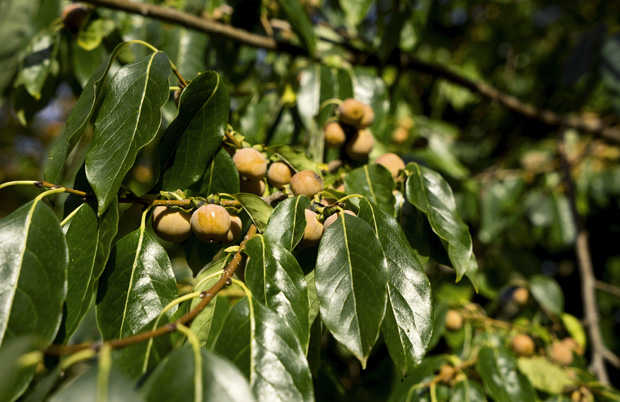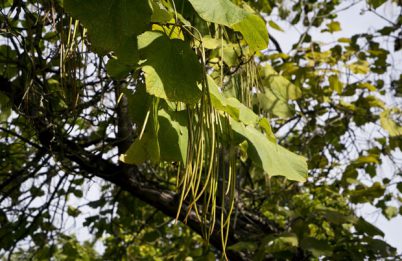Lotuspflaume (Asien)
Die Lotuspflaume (auch Lotusbaum) ist in Ost- und Westchina beheimatet und seit der Antike im Mittelmeerraum eingebürgert. Dort kann sie bis 20 m hoch werden. Sie diente ursprünglich den Ureinwohnern als Wildobst. Im vollreifen Zustand sind ihre Früchte klein jedoch zuckersüß. Als Zierbaum in unseren Breiten erreicht die Lotuspflaume 5-8 m und bildet eine eiförmige halboffene Krone. Diospyros lotus ist zweihäusig getrenntgeschlechtig (diözisch). Daher gibt es männliche und weibliche Bäume. Beide müssen vorhanden sein, um Früchte bilden zu können. Männliche Pflanzen haben weiße Blüten mit rötlichen Spitzen und weiblichen Pflanzen besitzen weiße Blüten mit gelben Spitzen. Aus den 1 bis 2 cm langen Blüten entwickeln sich zum Herbst kugelige, etwa kirschgroße essbare Früchte. Je nach Reifegrad sind diese gelb (unreif) bis hin zu blauschwarz (vollreif) gefärbt. Das Holz der Lotuspflaume ist dunkel wie Ebenholz.
| Habitus | eiförmig, halboffene Krone, malerisch wachsend |
|---|---|
| Blatt | elliptisch bis länglich, 6-12 cm lang, glänzend dunkelgrün, Herbstfärbung gelb |
| Blüte | weiß mit gelben und rötlichen Spitzen |
| Frucht | kugelig, gelb-orange bis purpurn |
| Wurzel | Herzwurzler |
| Standort | sonnig, warm, geschützt |
| Boden | Tonboden, Lehmboden, Sandboden, kalkreiche Boden |
| Härtegrad | Zone 7b (-14,9 bis -12,3 °C) |
| Faunabaum | Bienennährpflanze |





